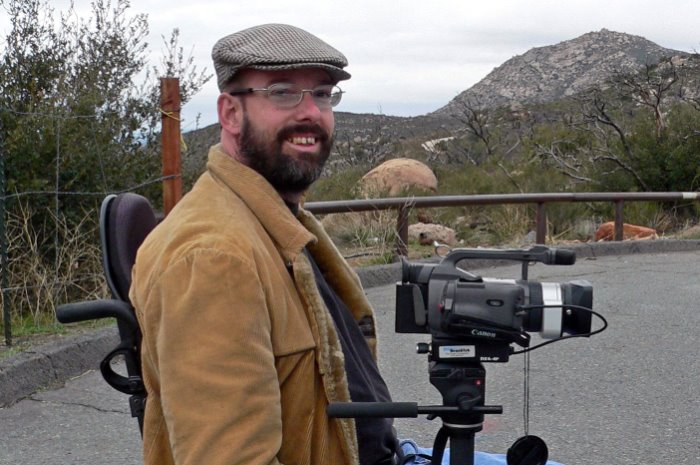The Quick and the Dead

My name is Rob Constantine. I have been an Episcopalian my entire life. I was born with Cerebral Palsy, a condition caused by a brain injury before, during or after birth. As a result, I lost the use of my legs. I must use crutches to walk and a wheelchair for work and going long distances.
As a youngster, I went to a school for kids with disabilities. We were segregated from the non-disabled kids, who attended the school next door. Because of that, we weren’t well-understood and we were often teased. That hurt.
The first Episcopal church I attended was built in the late 40s, a time when people with my type of disability were often institutionalized or kept at home. Access for people with disabilities was not a priority for those who designed churches and public buildings at that time. My church had two concrete steps going into the sanctuary and three steps to the communion rail. It was easy for others to lift me up the steps when I was small. As I grew bigger, the steps posed more of a challenge; I slowly lifted each leg onto the step while balancing crutches with nice people spotting me.
After mastering the walker and being a speed demon, it was humiliating being so slow on the steps, and seeing everyone else move faster. The liturgy we used at the time referred to the “quick and the dead.” I worried I wasn’t good enough because I wasn’t that quick. As I grew older, I met people who were full-time wheelchair users who had given up going to church because they couldn’t take communion at the rail with the rest of the congregation because of steps. That made my issues seem rather small. Taking communion in the back of the church made them feel separate. I understood that.
In ‘91, an arsonist burned my church to the ground. The sanctuary was burned beyond repair and had to be razed. We had several members with disabilities at our church, two in electric wheelchairs. The architect designed our new sanctuary in such a way that there were no steps at the entrance or to the altar. The new sanctuary opened in ‘97.
In ‘99, I co-produced a video with our diocese for the annual convention called “Hole in the Roof.” It addressed lack of accessibility for persons with disabilities in this diocese. There were quite a few shots of older, inaccessible buildings, but I hope that it inspired many people to act on behalf of accessibility.
The most important thing to remember when working on accessibility for your church is to ask the person with the disability directly how you can accommodate them. The person with a disability will have the experience and the knowledge about what works best. +
This article first appeared in the Spring issue of our Diocesan Messenger.